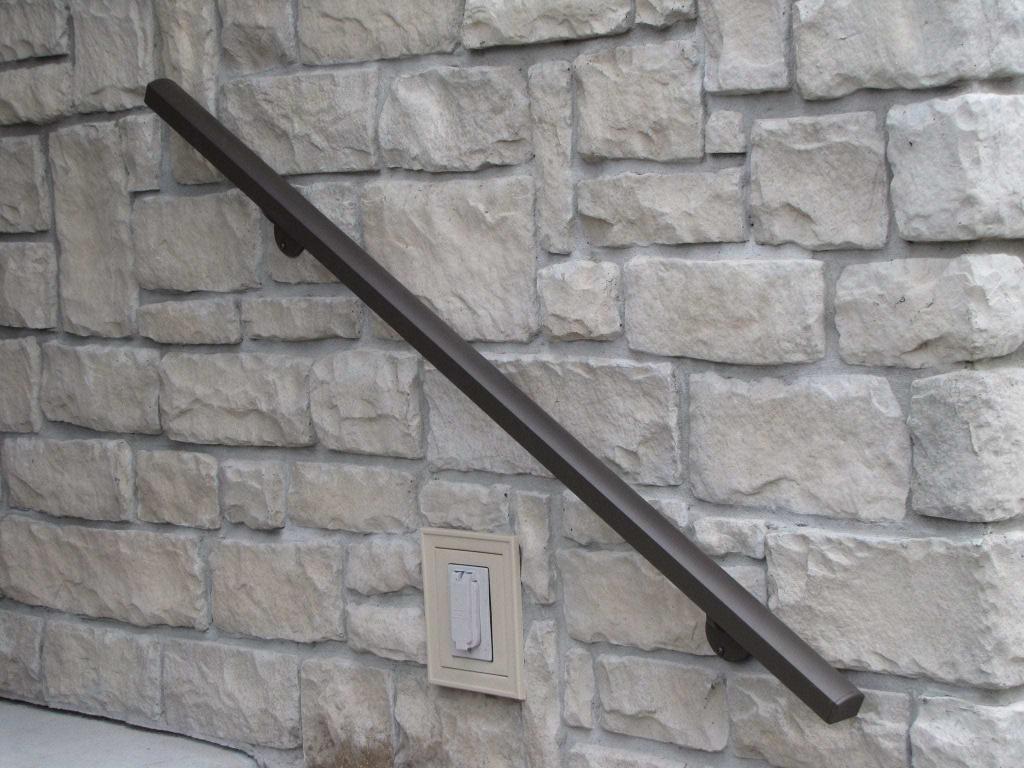AHD Blog
How to Mount a Handrail on Different Surfaces
Handrails can be a great finishing touch to your home’s exterior – but how do you install a handrail on, say, a stucco wall? What about brick, concrete, or wood? Figuring out how to mount a handrail on different surfaces can be a bit confusing, but it’s certainly not impossible. With a few tweaks during your mounting process, you’ll have an attractive, solid handrail mounted in no time.
How to Mount a Handrail on Different Surfaces
Wood
Unfortunately, wood can be prone to rot and pest damage if you forego routine maintenance. That can dramatically reduce the security of your handrail. For the most secure results, make sure to install your handrail with wood glue and wood screws. You’ll also want to drill pilot holes before installing your screws. A well-drilled pilot hole should prevent unsightly wood splitting and have you on your way to a perfectly-placed handrail.
Concrete
Concrete is one of the easiest surfaces for handrail installation, but you will need to pay attention to the equipment you use. A masonry drill bit is your best friend when drilling into concrete. Using a masonry bit to drill holes in concrete prevents cracking and makes installation quick and effective.
Stucco
Stucco offers extreme durability and fairly low installation costs, making it a popular choice for both commercial and residential buildings. Attaching a handrail to a stucco building is fairly straightforward – you’ll just need to make sure you find a wall stud or use toggle bolts if a wall stud is not available.
Vinyl
Vinyl siding isn’t strong enough on its own to support someone’s full weight leaning on a handrail. So if you’d like to mount a handrail on vinyl siding, you’ll need to anchor the railing mounts into the sheathing underneath the siding. This is extremely important, especially if you have individuals with mobility issues frequenting your stairs. Securing the railing to the sheathing, not the siding, ensures that your handrail will hold up under pressure.
Brick
Brick-lined front porches have a gorgeous, classic look. However, if you’ve ever tried installing a handrail on a brick wall, there’s a chance you’ve noticed the most frustrating feature of brick: cracking or crumbling under pressure. Brick can be delicate, but it’s certainly possible to install a handrail on a brick wall.
First, determine the quality of your bricks. If your bricks were formed with high amounts of sand, ash, or lime, they may be more prone to cracking or blowing out. Second, consider using a hammer drill instead of a standard drill. Hammer drills offer the benefit of a cleaner, faster hole for your railing anchor. You can also work with epoxy to fill in any small drilling cracks. This is especially helpful if you’re working with softer or older bricks. Finally, be aware of differences in height created by uneven bricklaying. Your handrail must be at least 42 inches tall, and the height of the top and bottom posts must also be the same. Double-check your measurements before getting started to identify any uneven spots.
_____
Figuring out how to mount handrails on different surfaces doesn’t have to be a chore. In some cases, all you need is a little patience and an extra tool or two, like a masonry drill bit.
At Aluminum Handrail Direct, we’re committed to providing high-quality aluminum handrails that are durable, maintenance-free, affordable, and attractive. If you have questions about handrail installation – or are searching for a handrail system that is perfect for your needs – visit our online store today.


